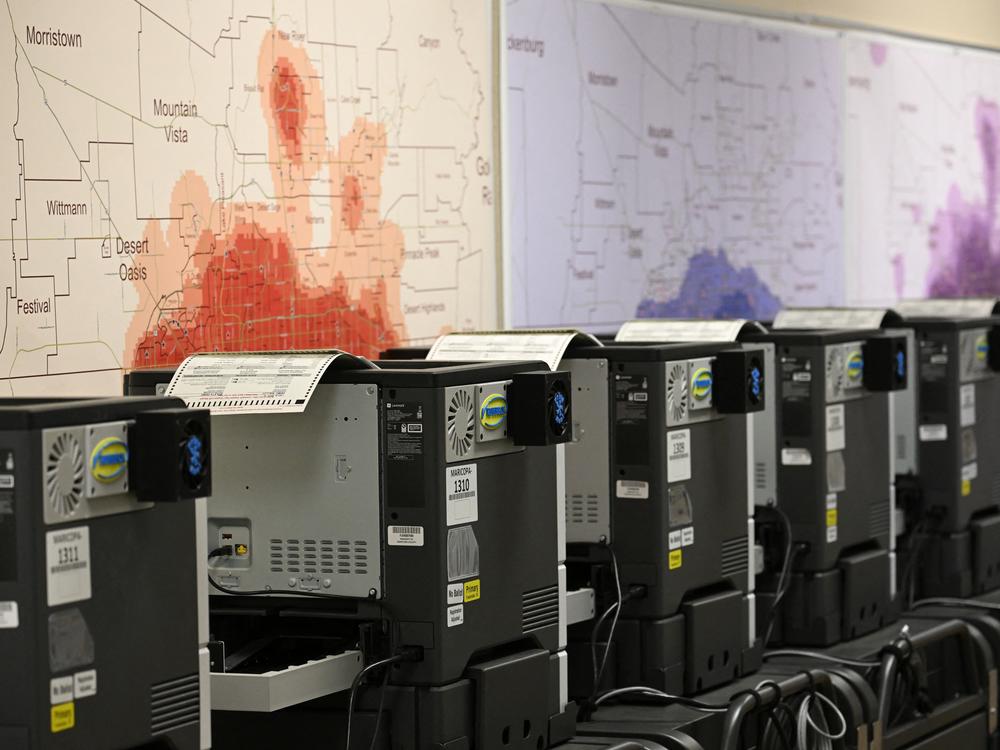Section Branding
Header Content
How we know voter fraud is very rare in U.S. elections
Primary Content
Most Americans are concerned about voter fraud in this year’s general election.
That’s according to a new NPR/PBS News/Marist poll. Much of this concern is driven by Republicans after years of former President Donald Trump and his GOP allies casting doubt on the legitimacy of U.S. elections.
But voter fraud remains a very rare occurrence across the country.
“Research has been consistent over time that voter fraud is infinitesimally rare and almost never occurs on a scale that would affect an election outcome,” said Alice Clapman, senior counsel for voting rights at the Brennan Center for Justice, which advocates for expanded voter access.
And it’s not just research. Clapman said courts have also looked at this issue, as well as government commissions and prosecutorial offices.
“And the answer has overwhelmingly been throughout the years that this is extremely rare,” Clapman said. “Oftentimes courts, once they look at specific evidence, conclude that the evidence just isn't there.”
Voter fraud charges happen, but at a very small scale
Following Trump’s false claims, leaders in Republican-run states have been ramping up investigations into alleged voter fraud. Despite the increased efforts, the number of potential instances of fraud they are actually finding amounts to a tiny fraction of the number of ballots cast in a state’s election.
In Ohio, Republican Secretary of State Frank LaRose announced in 2022 his office had found 75 voters who allegedly cast a ballot in the state and another state in 2020. Almost 6 million ballots were cast in Ohio that year.
In a statement, LaRose’s office said they had referred a total of 630 cases to prosecutors “over the course of multiple elections” — while also noting “voter fraud continues to be exceedingly rare” in the state.
Also after the 2020 election, The Associated Press contacted local election officials in six swing states. In their analysis, they found 475 potential voter fraud cases — which amounts to an extraordinarily small percentage of the more than 25 million ballots that were cast in those six states.
Overall, Clapman said, there is a big gap between “the rhetoric and the actual reality” of how many instances of voter fraud some state officials identify and refer for prosecution.
“We do oftentimes see dramatic claims by state officials about voter fraud,” she said. “But what we've seen over the years is that investigations, for example, in Kansas and Colorado, Maine, Florida, across the political spectrum have yielded very, very small instances of actual prosecutions.”
Voter fraud vs. voting mistakes
And even when cases do make it to court, they are sometimes thrown out or face a difficult path through the legal system. This often happens, Clapman said, in cases that involve ineligible voters who voted “accidentally in good faith, believing that they were eligible.”
Clapman said a lot of these cases involve people who at one point lost their voting rights due to a felony conviction. Some examples are from Florida, where 20 formerly incarcerated people were arrested for alleged illegal voting, even though they were given voter registration cards; as well as a prominent case in Texas involving a woman named Crystal Mason who said she thought she was eligible to vote in 2016.
Clapman said conservative-leaning groups often lump all cases where the voter thought they were eligible along with cases where someone intended to commit fraud.
“These numbers don't distinguish between, you know, an allegation that may be incorrect or a situation where someone has voted in good faith incorrectly,” she said.
States have systems to prevent someone from voting illegally
Lastly, states have a series of mechanisms to help weed out people who are ineligible to vote before they could cast a ballot.
States, by law, are required to routinely remove ineligible or deceased voters from their rolls. And there are tools like the Electronic Registration Information Center, also known as ERIC, that help states share voter data.
Depending on the type of voting — in-person vs. mail-in — there are also a host of protections that would keep someone from casting a ballot that isn’t theirs, or from voting altogether if they are ineligible. That includes things like signature matching, drop box surveillance, as well as poll worker training.
“States have very effective protections in place to prevent and detect voter fraud,” Clapman said. “And then it is always important to be reminded that the penalty for voter fraud is enormous.”

